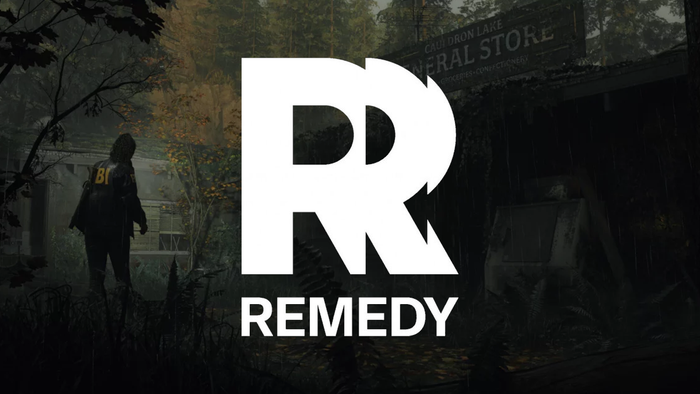
Featured Blog | This community-written post highlights the best of what the game industry has to offer. Read more like it on the Game Developer Blogs.
In Memorial: A Tribute to Danielle Bunten Berry
An affectionate tribute to one of the video game industry's most intriguing and influential pioneers, from the dawn of game design.

This piece was previously published on May 23, 2012 on Medium Difficulty. It is re-posted here with permission.
For better or worse, I can no longer think about social gaming pioneer Danielle Bunten Berry without getting Elton John’s Candle in the Wind stuck in my head. “I would have liked to know you, but I was just a kid.” The more that I think about her biography, the more personal my feelings get. And every time, that damned song pops up in my head. Like the song I can’t shake, the following is a tribute, and a list of reasons I would have liked to know her.
Her Games
Her classic video game M.U.L.E. is an established cult favorite in the video game industry, as well as among the friends whose taste I respect most. (Pictured here in NES version, in the home of the esteemed retro entertainment collector Mr. Jeff Bowers.)

M.U.L.E. was originally released for the Atari 400/800 in 1983, and is one of the first video games designed to facilitate social interaction. The game is intended to have four human players, but AI is available to substitute if needed. The gameplay itself is similar to a cross between Monopoly and Minecraft. Players cooperate and compete while buying and cultivating land on an alien planet, within the same “Old West in outer space” genre as the TV show Firefly or the game’s inspiration, Robert Heinlein’s Time Enough for Love. Once land is purchased, it can be mined or harvested for the resources that drive gameplay: Food, Energy, Smithore, and occasionally—during Tournament mode— Crystite. Each player’s turn length is determined by their quantity of food. Smithore can be used to create M.U.L.E.s (Multiple Use Labor Elements), the cute, robotic livestock used to harvest and mine. When Smithore is scarce, supply-and-demand will drive up the cost of M.U.L.E.s in the store, and make it difficult to create new M.U.L.E.s by hand. Energy is needed to have an affective harvest, or an effective mining effort. The overproduction or underproduction of Food, Energy, or Smithore, as well as the hoarding and trade of these commodities, provide ways to manipulate the market value of each product, and affect how well one’s opponents can play the game. Players can also gamble in the pub for money, participate in an auction, shop in the store, or hunt the mountain Wampus (a monster hunt mini-game in which the Wampus pays a ransom for release, should it be caught).
During Tournament mode, collusion between players is enabled, and the making and breaking of dirty financial deals is part of the fun of the game. Crystite becomes available as another commodity to product and sell. Because it’s sold off-world, Crystite is a way to amass wealth without directly affecting the supply and demand economics that can otherwise warp one’s opponents’ turns.
M.U.L.E. feels like a classic board game, and anyone who has additional curiosity about its gameplay is encouraged to find a copy and try it out (editor’s note: or register at Planet Mule to play a free online version!). A handy game manual provided by Ian Mutoo, complete with tips from the game’s designers themselves, can be found at here.
M.U.L.E. isn’t the only well-loved game that Danielle Bunten Berry designed, but it is arguably the most famous piece in her influential career as a game designer at the dawn of video games. How famous, and how influential, was she? Will Wright dedicated The Sims to her. She’s been inducted into the AIAS Hall of Fame. An industry favorite, she is often cited as a game designer’s game designer, someone to know about when one wants to appear familiar with the history of the field. Hers is a name to drop over cocktails, equivalent to citing the MC5 or Richard Hell and the Voidoids when one wants to show knowledge of the history of punk rock. If you know her stuff, you’re “in.”
Her Life
One of the reasons I think of “Candle in the Wind” when I think of Dani is because I can’t help but associate her with Marilyn Monroe, the person Elton John wrote the song for. It’s important to understand and honour her position as an influential contributor to a vital entertainment medium. However, like Marilyn she was, and I do not use this term lightly, a badass.
Unfortunately, she resembles the ill-fated beauty Marilyn in more than just her landmark career. Ms. Bunten Berry also died young, at the age of 49. A chain-smoker, she died in 1998 of lung cancer. Because I currently work as an addiction counselor for a tobacco quit hotline, this jgets to me. Working with people who have terminal, or potentially terminal, lung cancer is a normal part of my daily life, and to get a bit gonzo-selfish for a moment… If I had a time machine and she wanted to work with me, I can’t help but hypothesize that I might have been able to help her buy herself some time. A lot of “ifs,” sure, but she’s officially on my list of “tech pioneers whom I’d love to go back in time to save,” alongside Nicola Tesla. The fantasy may over-simplify matters, but it’s one I feel honestly.
However, simply being a badass in a delightful entertainment medium who died a tragic young death isn’t quit enough to fit the Marilyn Monroe analogy. Even having well-styled hair (which she certainly did have) isn’t enough. No. To really nail the analogy, there must be hints of deep melancholy and sadness sandwiched between her career and her young death. And unfortunately, her biography continues to fit the model too well.
For the last few years of her life, Danielle Bunten Berry wrote highly personal, diary-like pieces and shared them online. While many of those pieces are no longer readily available, many still are. An especially long and emotionally revealing example includes an e-mail conversation that she had held with a potential suitor. She introduces the conversation by outlining some of her decisions and discoveries while navigating the dating world and her own sexuality, within the context of when she opts to “come out” to potential partners. Her writing voice brims with warmth and a sense of humor, even when expressing anger or sharing painful memories. Some of her memories shared were, unsurprisingly, quite painful indeed.
Danielle famously began her career as “Dan Bunten,” and came out as transgender in 1992, at a time when there were even fewer transgender public figures than there are now. I don’t want to come across like a vapid, cisgender Care Bear and claim that transphobia is some primitive historical artifact that our enlightened age is finally clear of. Right now, I worry about the impact that transphobia has on the safety and wellbeing of people that I care about. But some of Danielle’s descriptions are especially heartbreaking.
I thought I was part of a large and caring family (many of whom live in the area) till I did this. One of my favorite brothers suggested that I should have killed myself and if I didn’t leave the family alone he’d help me do it!
To me, this seals the Marilyn Monroe analogy. She was mistreated, and it’s impossible to read about her experiences and remain emotionally unaffected.
Unfortunately, more than a decade after her passing, the subject of her gender remains controversial. A Kotaku article published earlier this year took heat for mishandling the subject of her gender, and writing as though M-to-F women are only women after their formal coming out has taken place. Back in 2010, an IGN piece about the donation of The Dani Bunten Berry Papers to the International Center for the History of Electronic Games broke even more seriously with the journalistic standards regarding gender that were provided by the Associated Press Stylebook and referred to Danielle as “he” throughout the piece.
To further complicate things, Ms. Bunten Berry’s own personal writing broke with some of the same conventions. She wrote about her own history in a slightly dissociated way, referring to her pre-transition self in conversation as a separate person.
Although to some it may sound bizarre using “he“ to refer to myself in my previous gender, it actually feels more accurate than any other alternative (and it’s shorter than “the previous owner of this body” which I also occasionally use) […] I love being able to be fully “me” — past, present and future. With my friends I get to drop anecdotes from his past and share the insights that such dissonance usually offers. It’s mostly happened that people I meet now make much deeper connections than before. There may be a cost but it seems well worth it to feel like I’m the whole person I want to be.
A more heart-wrenching, and more frequently-quoted, personal essay she wrote openly questioned whether she could have led a more peaceful life by observing her gender in a less-binary way. Being something of a rebellious woman myself, I can’t help but like that she shared these thoughts, even though they could be politically incendiary in today’s culture. Her complaints about a loss of nerve sensation following major surgery, and the devastating impact of transphobia on her private life are especially revealing. (Frankly, if I were given the hard choice between having inorgasmic female plumbing and orgasmic male plumbing that just wouldn’t match my female gender identity, I wouldn’t automatically pick the female option. So I certainly can’t blame her for pontificating on this choice in retrospect. Many women don’t opt for that surgery, when faced with that choice.)
Digging into the autobiographical essays of a deceased historical figure is a morally complicated activity. It’s easy to cherry pick sentences and use them to reflect one reality or another, without giving the original author the chance to correct the interpretations. This is particularly true when the writing is as open and engaging as Ms. Bunten Berry’s biographical pieces are. She would likely have made a marvelous interview subject, were time travel possible.
Because Ms. Bunten Berry isn’t available to provide any new commentary on the ongoing discussions regarding both her groundbreaking career in social game development, and her publicly pontificated private life, it may be best to retreat to a more intellectually and emotionally simple place. It is with that aim that I return to my original Marilyn Monroe analogy, and before that, to the song that this analogy sticks in my head. It is, after all, quite safe to say that “her candle burned out long before her legend ever did.”
Read more about:
Featured BlogsAbout the Author(s)
You May Also Like














